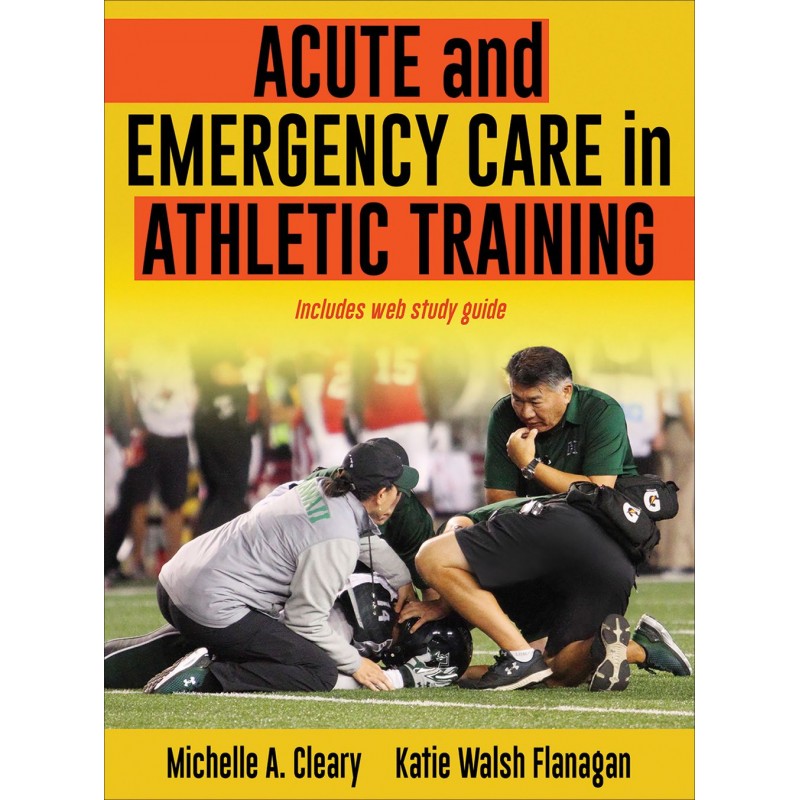Athletic trainers are often the first ones on the scene when an individual sustains an acute injury. Therefore, knowing how to assess injuries and illnesses and begin treatment quickly is of vital importance for aspiring athletic trainers.
Acute and Emergency Care in Athletic Training With Web Study Guide teaches students how to recognize and manage emergency conditions so they can provide appropriate patient care between the field and the emergency department.
Authors Michelle Cleary and Katie Walsh Flanagan take an interdisciplinary approach, drawing from literature, position statements, and guidelines from numerous professional health care organizations to offer current evidence-based clinical best practices. The book’s comprehensive coverage adheres to and incorporates guidelines from the Commission on Accreditation of Athletic Training Education (CAATE) and the Board of Certification (BOC), and it is one of the first textbooks to align with the competencies outlined in the CAATE 2020 standards.
To prepare students to effectively provide appropriate care before getting an injured or ill athlete to the hospital,
Acute and Emergency Care in Athletic Training includes the following learning aids::
- Case studies in the web study guide offer practical scenarios that will facilitate critical thinking and decision-making skills.
- Clinical Skills sidebars guide students through the process of completing specific tasks such as splinting, wound care, and airway maintenance.
- Red Flag sidebars indicate areas where significant caution is warranted.
- Decision-making algorithms and decision trees lead students through selecting the most appropriate treatment option based on a patient’s signs and symptoms.
- Key terms are boldfaced in the text and are defined in the glossary section.
With a full-color presentation and more than 280 photos and illustrations, the text takes a systematic approach to acute and emergency care, with the content divided into two parts. Part I provides critical information on prevention and risk management strategies, including developing an emergency action plan, conducting an emergency examination, and administering emergency medications. Part II then provides the basics of emergency evaluations, describing how to examine, treat, and manage common acute injuries and illnesses to limit the severity of these potentially life-threatening conditions.
To aid instructors using
Acute and Emergency Care in Athletic Training in the classroom, there is a full array of ancillaries, including a test package, an instructor guide with sample answers to the case study questions, and a presentation package plus image bank.
When an athlete is injured on the field of play, time is of the essence.
Acute and Emergency Care in Athletic Training is an invaluable resource for training and preparing the initial responders to recognize critical situations and treat the acutely injured or ill patient.




 Delivery policy
Delivery policy
 Security policy
Security policy
 Return policy
Return policy
